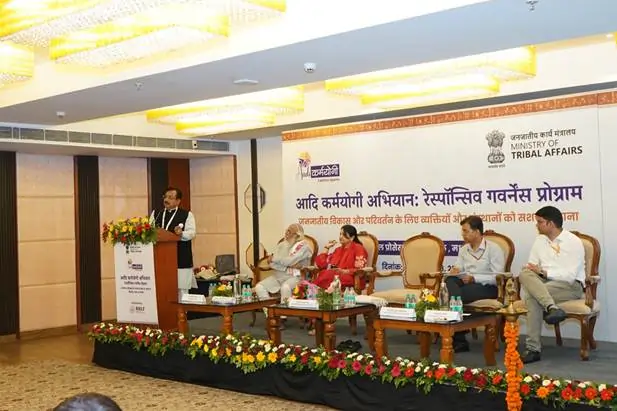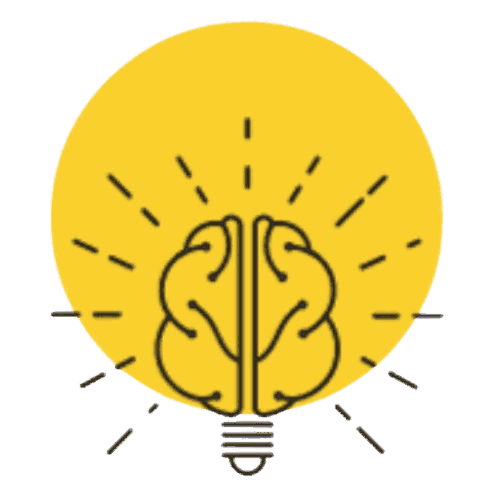New Delhi: A landmark move to revolutionize tribal development, the Ministry of Tribal Affairs has launched the Adi Karmayogi Abhiyan, heralded as the world’s largest grassroots leadership program for tribal communities. Announced today under the visionary leadership of the Honorable Prime Minister of India, this transformative initiative aims to rebuild governance from the ground up, rooted in tribal values and driven by local leaders. The program promises to empower tribal communities, foster responsive governance, and create a robust network of change-makers across the nation, aligning with the vision of Viksit Bharat 2047.
The Adi Karmayogi Abhiyan, launched as a cornerstone of the Janjatiya Gaurav Varsh, embodies the principles of Sewa (service), Sankalp (resolve), and Samarpan (dedication). It reflects the national ethos of “Sabka Saath, Sabka Vikas, Sabka Prayas, Sabka Vishwas” (Together with all, Development for all, Effort by all, Trust of all). By mobilizing 20 lakh change leaders across 1 lakh villages, 550 districts, and 30 States and Union Territories (UTs), the initiative seeks to redefine tribal development through inclusive, community-driven governance.

Empowering Tribal Communities: Objectives of the Abhiyan
The Adi Karmayogi Abhiyan is designed with clear, ambitious objectives to transform the tribal landscape:
- Promote Responsive Governance: The initiative prioritizes people-centric governance at the village and community levels, ensuring that policies and decisions reflect local needs and aspirations.
- Multi-Departmental Workshops: Since July 10, 2025, Governance Lab Workshops, also known as Process Labs, have been conducted from state to village levels. These workshops train state, district, and block-level master trainers to drive effective change.
- Co-Creation of Development Plans: Tribal communities and government officers will collaborate to formulate the 1 Lakh Tribal Villages-Vision 2030, a comprehensive roadmap with detailed action plans and investment strategies aligned with national and global development goals.
- Building a Leadership Network: The Abhiyan aims to create a network of 20 lakh change leaders across 550 districts and 30 States/UTs, empowering them to implement grassroots development initiatives.
Key Components: A Framework for Change
The Adi Karmayogi Abhiyan is structured around robust institutional mechanisms and volunteer engagement to ensure impactful implementation:
Institutional Mechanisms
- Adi Sewa Kendra: These centers will be established in every tribal-dominated village, where government officers and community members dedicate 1–2 hours fortnightly during Adi Sewa Samay. This time is used to address local issues, mentor youth, and strengthen governance initiatives collaboratively.
- Governance Lab Workshops: Multi-level process labs engage various government departments to co-create innovative solutions for tribal development, fostering inter-departmental synergy.
- Tribal Village Action Plan: Villagers and officials will jointly develop the Tribal Village Vision 2030, aligning with Sustainable Development Goals (SDGs) and national priorities to ensure inclusive and sustainable growth.
Volunteer Engagement
- Adi Sahyogi: Teachers, doctors, and professionals will serve as mentors, mobilizing communities and providing guidance to drive development.
- Adi Saathi: Self-Help Groups (SHGs), National Rural Livelihood Mission (NRLM) members, tribal elders, youth, and local leaders will support outreach and implementation efforts.
- Capacity Building: Training programs will equip tribal youth, women, and leaders with skills in governance, problem-solving, and social mobilization, fostering a new generation of empowered leaders.
Expected Outcomes: Transforming Tribal India
The Adi Karmayogi Abhiyan is poised to deliver transformative outcomes that will reshape tribal communities:
- Adi Sewa Kendra Implementation: These centers will serve as hubs for collaborative problem-solving, mentorship, and governance, ensuring that local voices are heard and acted upon.
- Governance Lab Innovations: The workshops will lead to tailored solutions, enhancing the effectiveness of tribal development initiatives.
- Tribal Village Vision 2030: The co-created action plans will provide a clear path for sustainable development, aligning with national and international commitments.
- Saturation of Government Schemes: The Abhiyan will ensure comprehensive coverage of flagship programs, maximizing their impact in tribal areas.
The initiative builds on the success of existing schemes, including:
- Dharti Aaba Janjatiya Gram Utkarsh Abhiyan, which focuses on holistic village development.
- Pradhan Mantri Janjati Adivasi Nyaya Maha Abhiyan (PM-JANMAN), aimed at delivering justice and welfare to Particularly Vulnerable Tribal Groups.
- National Sickle Cell Anaemia Elimination Mission, addressing critical health challenges in tribal populations.
By integrating these programs, the Abhiyan ensures a cohesive approach to tribal empowerment, amplifying their reach and effectiveness.
Unprecedented Scale: Participation and Outreach
The Adi Karmayogi Abhiyan is set to reach over 1 lakh tribal-dominated villages, engaging 20 lakh change leaders across 550 districts and 30 States/UTs. This massive scale underscores the program’s commitment to inclusive development. Community leadership training will empower tribal youth, women, and leaders with skills in governance and social mobilization, fostering self-reliance and collective action.
Volunteers play a pivotal role in the Abhiyan’s success. Adi Sahyogis—including educators and professionals—will mentor communities, while Adi Saathis—comprising SHG members, NRLM participants, elders, and youth—will drive outreach and implementation. This inclusive volunteer framework ensures broad participation, uniting diverse groups in a shared mission.
Leadership Voices: A Commitment to Change
The launch of the Adi Karmayogi Abhiyan has been met with enthusiastic support from key figures in the Ministry of Tribal Affairs:
- Hon’ble Minister Shri Jual Oram: “Adi Karmayogi Abhiyan is a historic step in realizing inclusive governance and people’s participation. By fostering Sewa, Sankalp, and Samarpan, and through collaborative engagement of tribal communities and government officers, we will co-create the 1 Lakh Tribal Villages Vision 2030.”
- Hon’ble Minister of State Shri DurgaDas Uikey: “This initiative has transformative potential for tribal development at the grassroots level and will help achieve holistic development of tribal villages on a mission mode.”
- Secretary Shri Vibhu Nayar: “Adi Karmayogi Abhiyan is designed to operationalize responsive governance at the grassroots. Through Governance Process Labs, government officers at all levels are receiving structured training to become effective change leaders.”
These statements highlight the program’s alignment with national priorities and its potential to drive meaningful change.
A New Era for Tribal Development
As a flagship initiative of the Janjatiya Gaurav Varsh, the Adi Karmayogi Abhiyan represents a bold step toward empowering tribal communities and fostering inclusive governance. By rebuilding governance from the ground up, guided by tribal values and led by local leaders, the program ensures that development is both sustainable and responsive to community needs.
The Abhiyan’s emphasis on collaboration—between villagers, government officers, and volunteers—creates a sense of ownership and accountability. Through Adi Sewa Kendras, Governance Labs, and the Tribal Village Action Plan, it addresses immediate challenges while building long-term capacities. By strengthening flagship schemes like PM-JANMAN and the Sickle Cell Anaemia Mission, the initiative maximizes resources to improve living standards, health, and economic opportunities for tribal populations.
Call to Action: Join the Movement
The Ministry of Tribal Affairs has issued a clarion call to all stakeholders—tribal communities, youth, SHGs, civil society, and government officers—to actively participate in this historic initiative. By joining the Adi Karmayogi Abhiyan, individuals and organizations can contribute to reinforcing tribal leadership and driving inclusive development across India.
The Adi Karmayogi Abhiyan is more than a program; it is a movement to honor tribal heritage while paving the way for a more equitable future. As it gains momentum, it promises to set a global benchmark for grassroots empowerment, embodying the spirit of collective resolve and dedication.
Frequently Asked Questions
1. What is the Adi Karmayogi Abhiyan?
The Adi Karmayogi Abhiyan is a transformative initiative launched by the Ministry of Tribal Affairs on August 21, 2025, aimed at empowering tribal communities through grassroots leadership. Described as the world’s largest tribal leadership program, it seeks to rebuild governance with tribal values, promote responsive governance, and create a network of 20 lakh change leaders across 1 lakh villages, 550 districts, and 30 States/UTs, contributing to the vision of Viksit Bharat by 2047.
2. What are the main objectives of the Adi Karmayogi Abhiyan?
The Abhiyan focuses on four key objectives:
Building a network of 20 lakh change leaders to drive grassroots development across India.
Promoting people-centric governance at the village level.
Conducting multi-departmental Governance Lab Workshops to train master trainers since July 10, 2025.
Co-creating the “1 Lakh Tribal Villages-Vision 2030” with action plans aligned with Sustainable Development Goals (SDGs).
3. How does the Adi Sewa Kendra function under the Abhiyan?
Adi Sewa Kendras are community hubs established in every tribal-dominated village. During fortnightly “Adi Sewa Samay” (1–2 hours), government officers and community members collaborate to address local issues, mentor youth, and support governance initiatives, ensuring responsive and inclusive decision-making.
4. Who can participate in the Adi Karmayogi Abhiyan, and how?
The program invites participation from tribal communities, youth, Self-Help Groups (SHGs), civil society, and government officers. Volunteers are categorized as:
Adi Saathi: SHG members, NRLM participants, tribal elders, youth, and local leaders aiding outreach and implementation. Interested individuals can join through local Adi Sewa Kendras or contact the Ministry of Tribal Affairs for more details.
Adi Sahyogi: Teachers, doctors, and professionals who mentor communities.
5. How does the Abhiyan integrate with existing government schemes?
The Adi Karmayogi Abhiyan strengthens flagship programs like the Dharti Aaba Janjatiya Gram Utkarsh Abhiyan, Pradhan Mantri Janjati Adivasi Nyaya Maha Abhiyan (PM-JANMAN), and the National Sickle Cell Anaemia Elimination Mission. By ensuring saturation of these schemes, the Abhiyan maximizes their impact, improving living standards, health, and economic opportunities in tribal areas.

